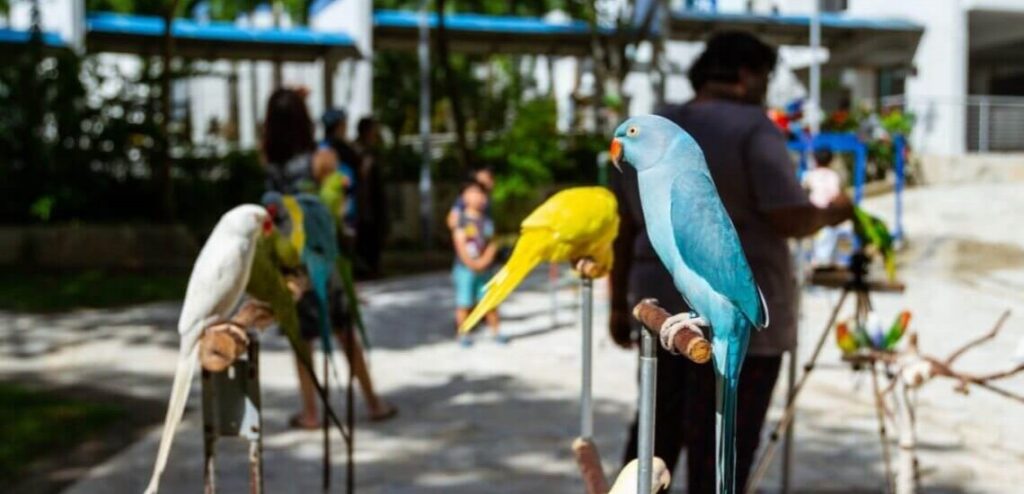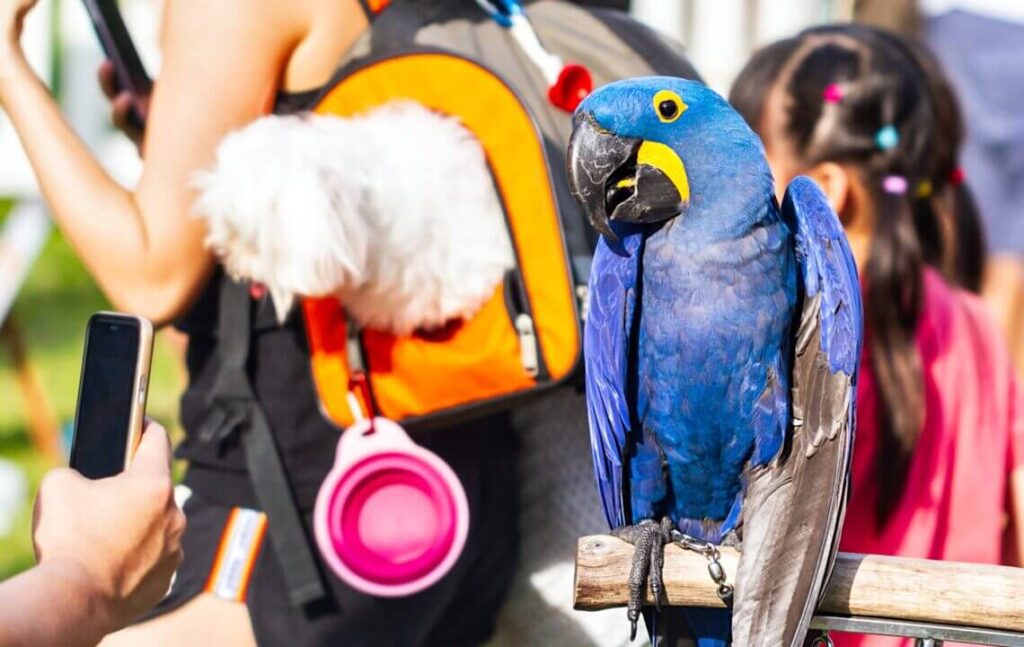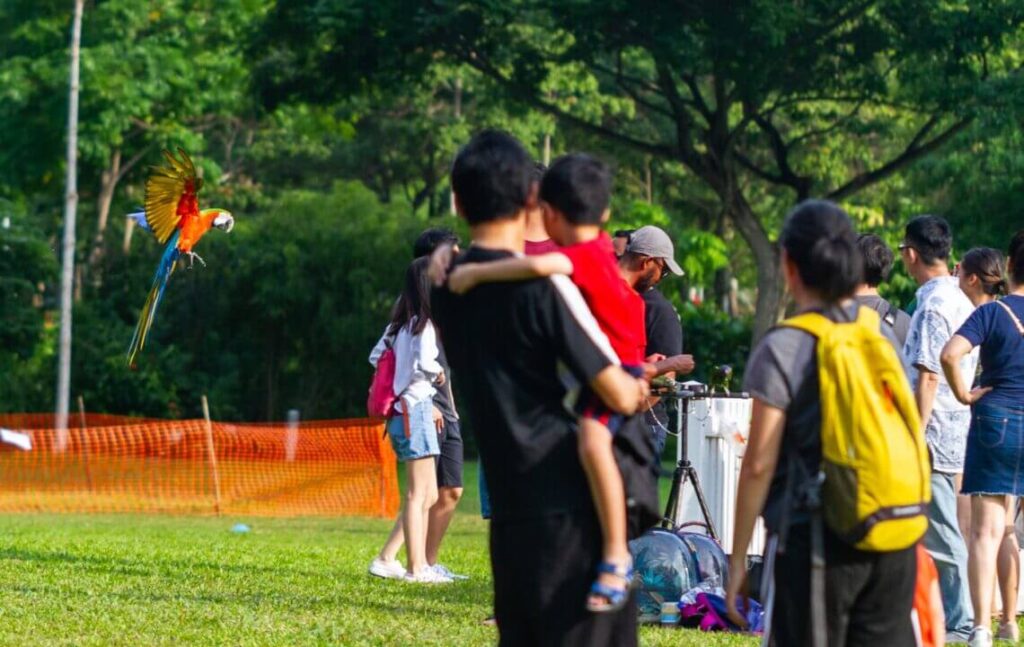70% of Singapore parrot owners disapprove of wild parrot poaching

New research reveals that the majority of Singapore’s growing community of pet parrot owners prefer captive-bred birds, and are concerned about the impact of the illegal wild parrot trade. If armed with knowledge, these groups have the potential to become champions for parrot conservation.
By Jessica Law
“When I went to the pet shop I had no intention to keep the parrot, but the longer I was there, I knew I would come out with something.” We’ve all been in the same position as this Singaporean parrot owner – charmed by an adorable animal and tempted to take it home with us straight away. But though it may seem like an individual decision, everything we do is part of a network of interactions.
Parrot ownership is on the rise in Singapore, fuelled by increasing affluence and a growing trend for bird husbandry. Many of these owners are joining hobbyist groups, which regularly meet to share information and fly their birds. These meetings in turn motivate members to buy even more parrots.
Many parrot species can easily be bred in captivity – but some traders prefer to cut corners. Looking for quick cash, they plunder Asia’s forests for wild birds, decimating native parrot populations until they are on the brink of extinction. For example, the White Cockatoo Cacatua alba is now Endangered due to illegal trade, with trees that were once alive with sound and colour now standing empty.
Dr Anuj Jain, Preventing Extinctions and Bird Trade Coordinator for BirdLife Asia and lead author of the study, has seen the devastating impact first-hand: “I have witnessed incidents of Indonesian parrots being poached from our field sites and transported to demand centres like Singapore and Hong Kong through complex transit routes,” he recounts sadly. “These parrots go through an arduous journey in very poor welfare conditions, and many die on the way.”
Image credit: © Tim Plowden/ www.timplowden.co.uk

But it doesn’t have to be this way. A new paper, published this week in Oryx — The International Journal of Conservation, revels that more than 70% of parrot owners prefer captive-bred to wild-caught parrots, and are concerned that parrots are being illegally captured for commercial trade. Most were also willing to pay more and wait longer for a parrot that came from sustainable sources. Yet, 67% of parrot owners did not know the conservation status of the species they kept – whether they were thriving in the wild, or just surviving.
When sourcing this information, researchers went straight to the roots, conducting 145 questionnaires and 30 in-depth interviews with parrot owners across the country, and cataloguing the Facebook profiles of parrot hobbyist groups in Singapore. Importantly, they wanted to understand parrot owners’ social networks: over half of respondents were members of a parrot hobbyist group, and nearly two thirds said that their membership had motivated them to buy more parrots. Most people purchased parrots from loosely-regulated pet shops, unregulated online platforms and home breeders. “I bought my first lovebird from Gumtree,” says one interviewee.
Senior author of the paper, Dr. Jacob Phelps from the Lancaster Environment Centre of Lancaster University, explains: “It is helpful to look at wildlife trade as part of a complex ‘ecosystem’, where different types of traders, platforms and consumers are interacting and adjusting their behaviours. Better understanding these dynamics can help us come up with more effective conservation strategies.”

So what’s next? An important first step is to raise awareness among hobbyist groups of the devastating impact illegal trade is having on wild parrots, and the power they have as consumers to change the industry. As Dr Anuj Jain puts it: “There is potential to work with hobbyist group communities to shift the trade towards sustainably-sourced and captive-bred birds in the long term. The ultimate goal is not to put a stop to the trade, but to empower communities to become advocates for responsible and sustainable pet ownership.”
Though it’s a good start, consumer action is only one part of the mission to protect threatened parrots. To truly put an end to the illegal trade, retailers should be encouraged to show a certificate of origin for every parrot sold. Regulations also need to be much more tightly enforced – a move that is already in the pipeline, since Singapore’s CITES Authority, which oversees the legal import and export of threatened species, has recently been taken over by the National Parks Board of Singapore.
However, there is still an important lesson to learn from this new study. Everything we do is part of a vast network of people and interactions – and if we want to bring about positive change, we’re stronger if we do it together.
Understanding Singapore’s dynamic parrot trade ecosystem is a joint research paper by BirdLife International, Nature Society (Singapore), Mandai Nature, National University of Singapore, Yale – NUS College, and Lancaster University.
If you would like to help us continue this important work, you can donate to our appeal here.